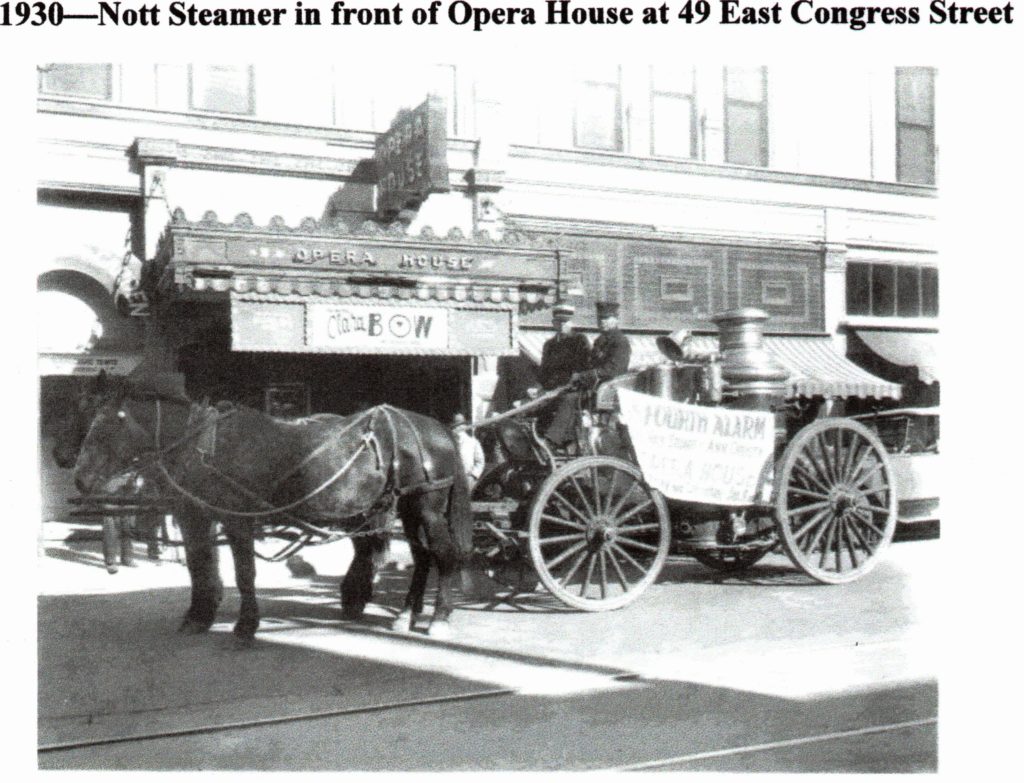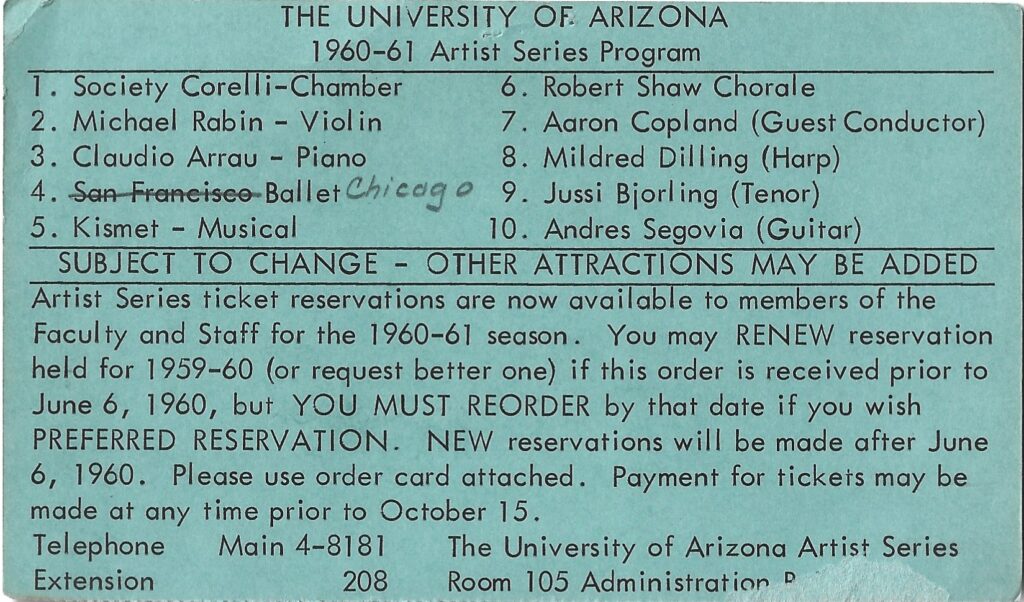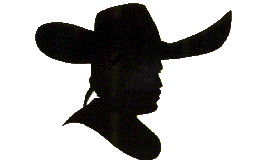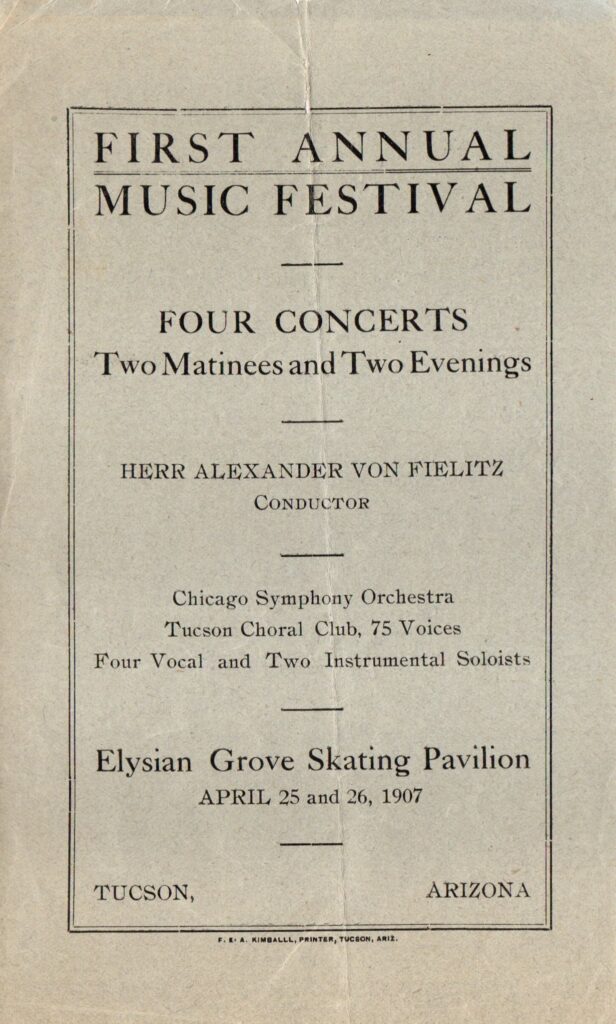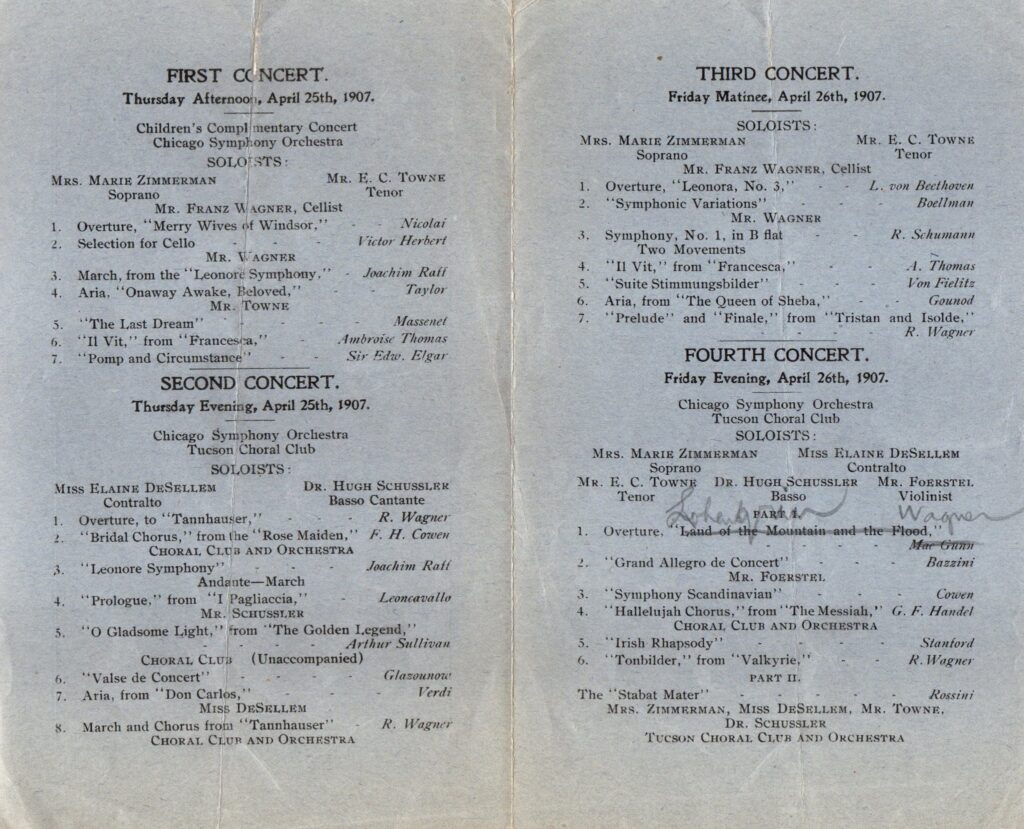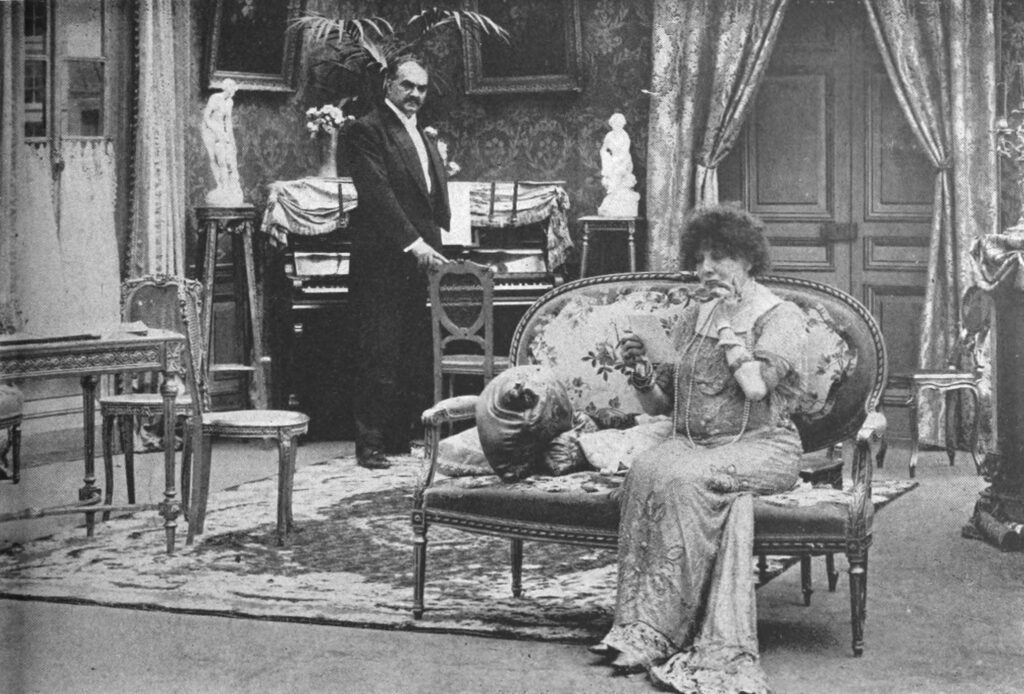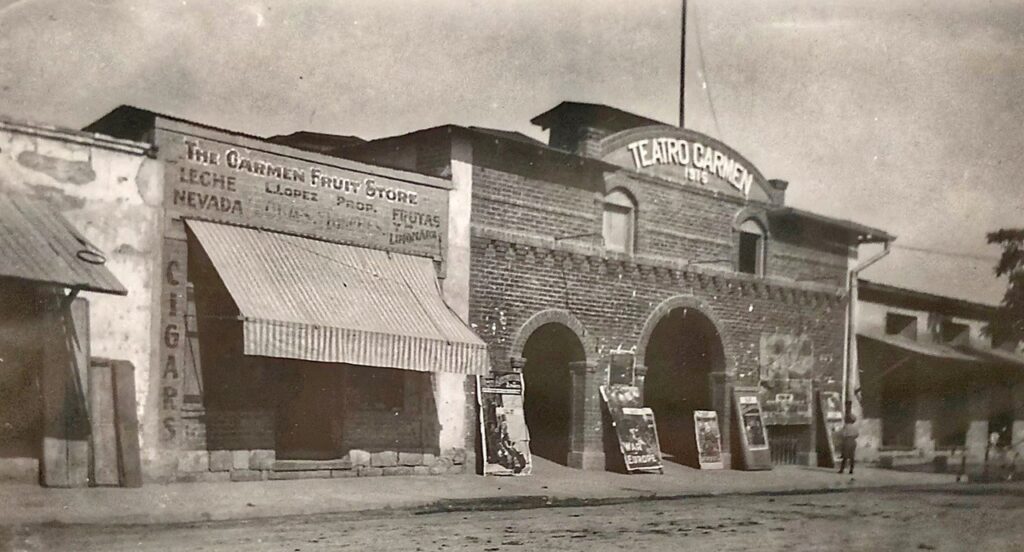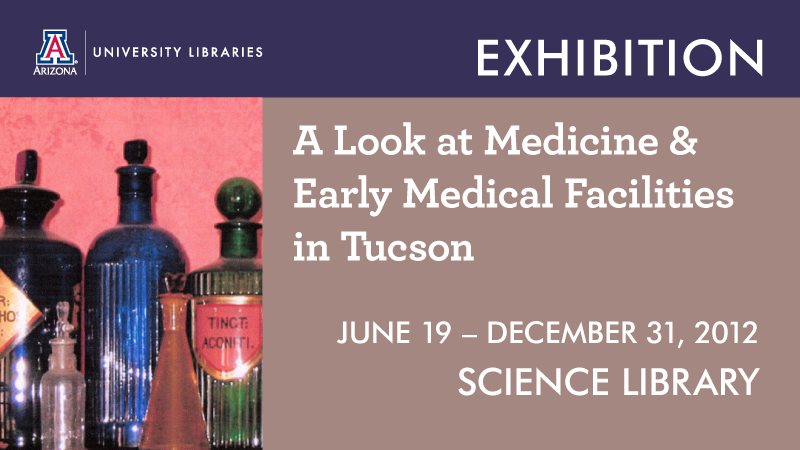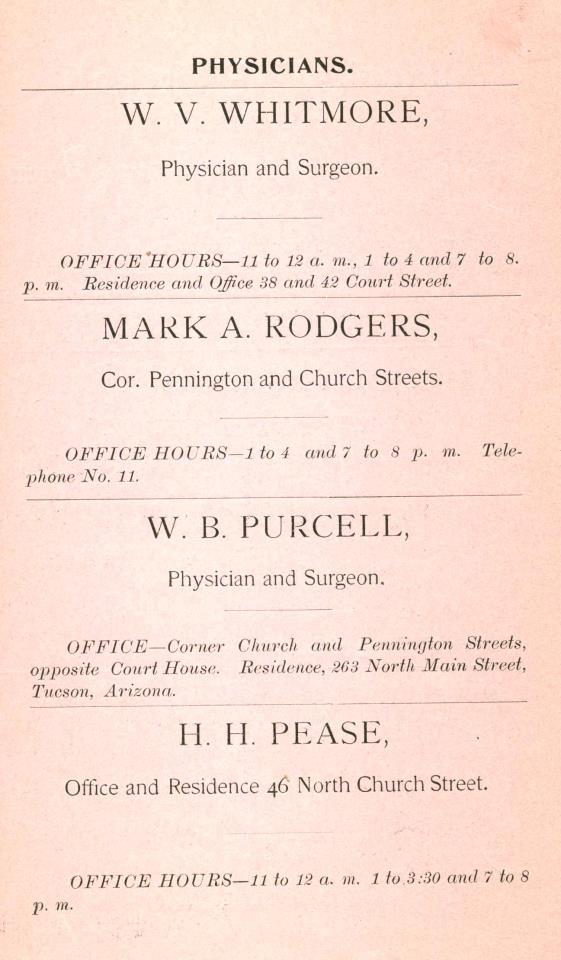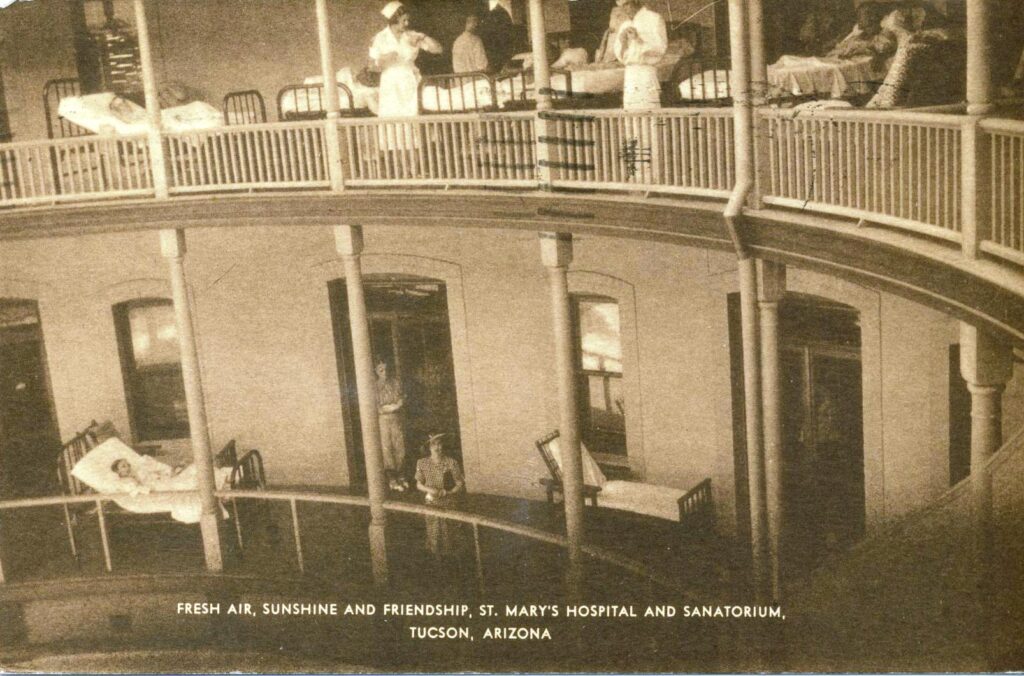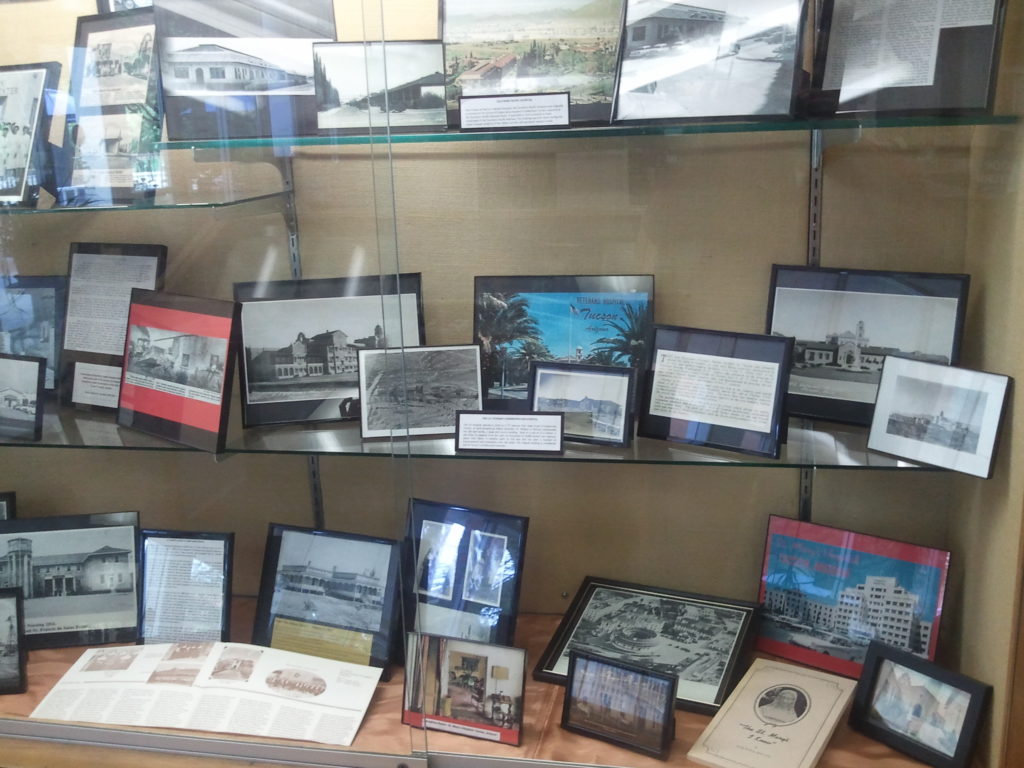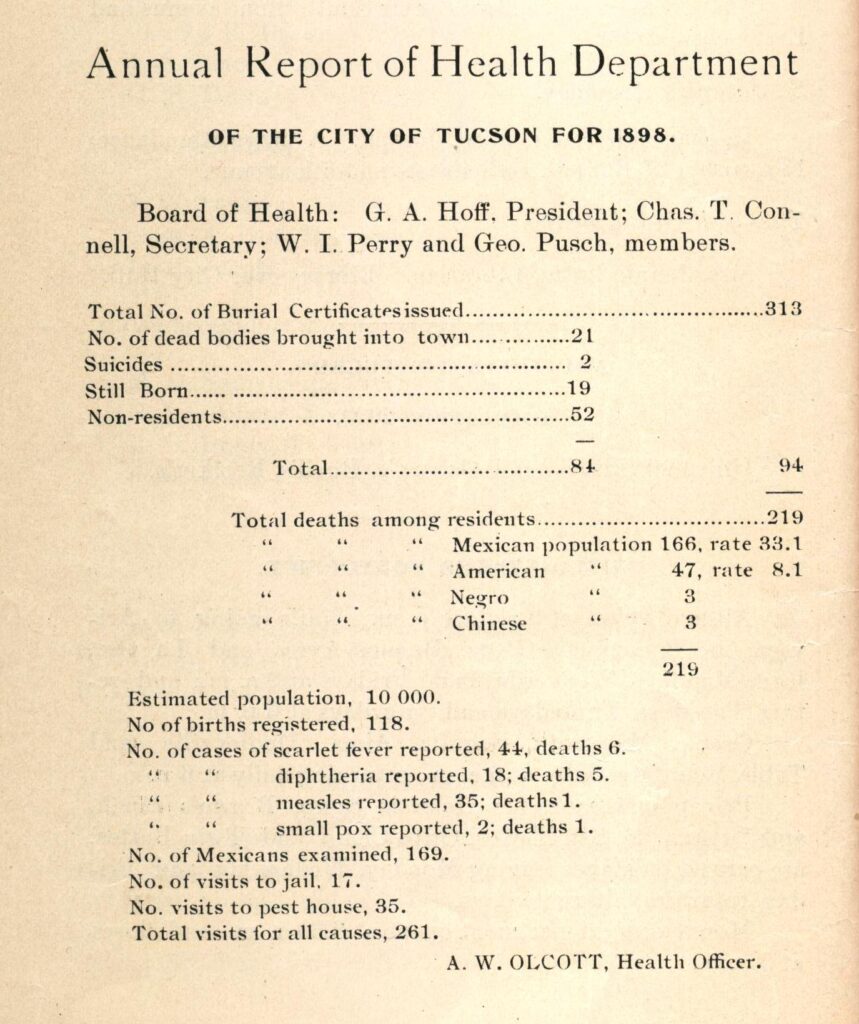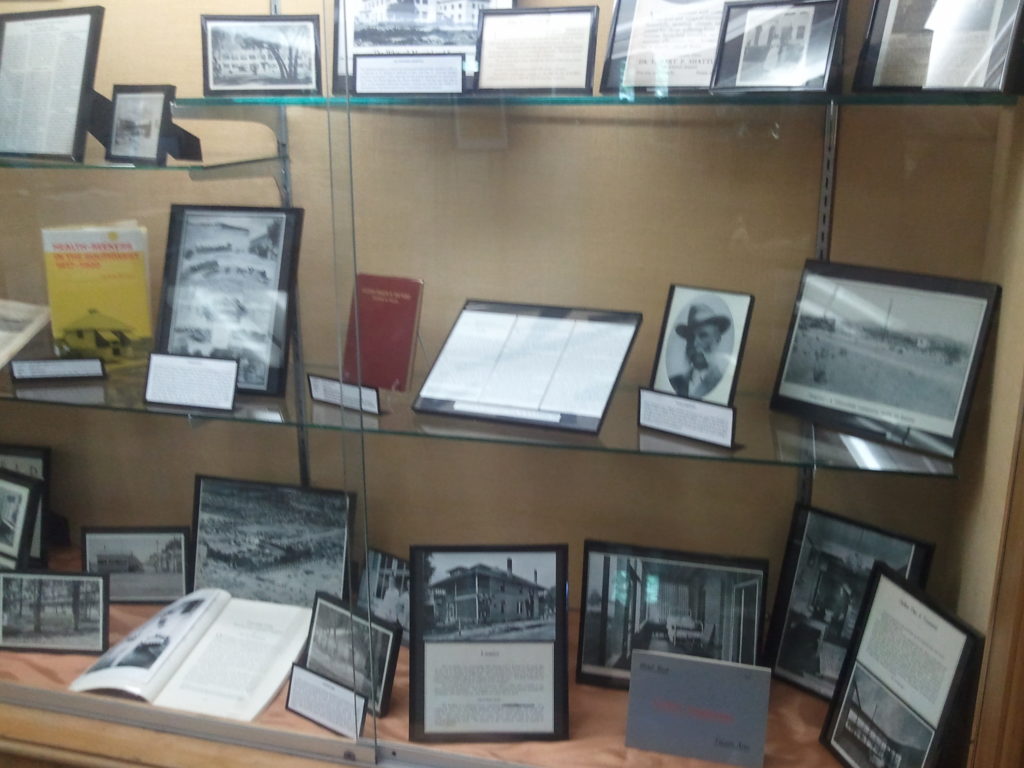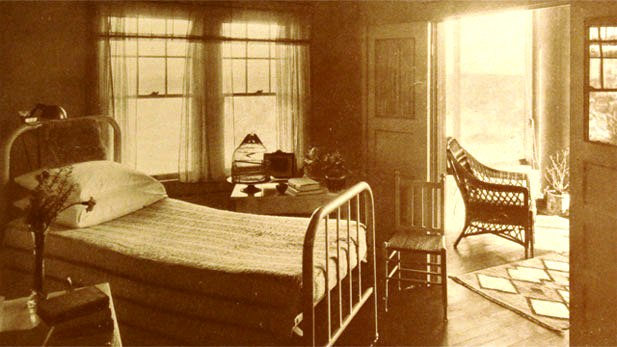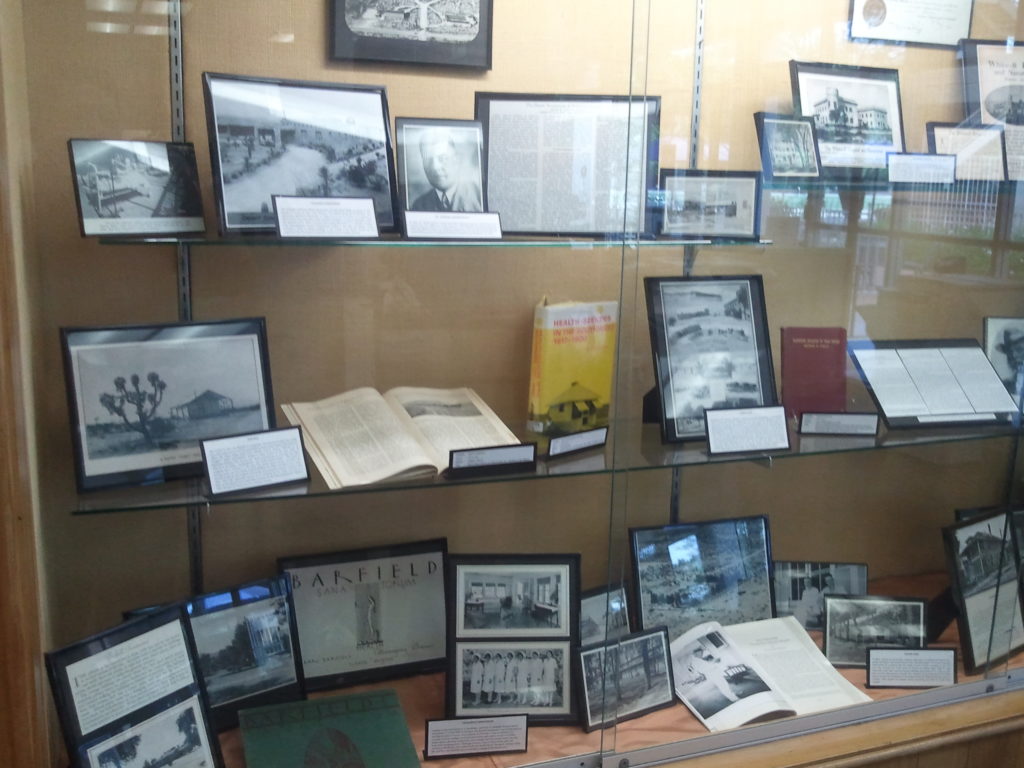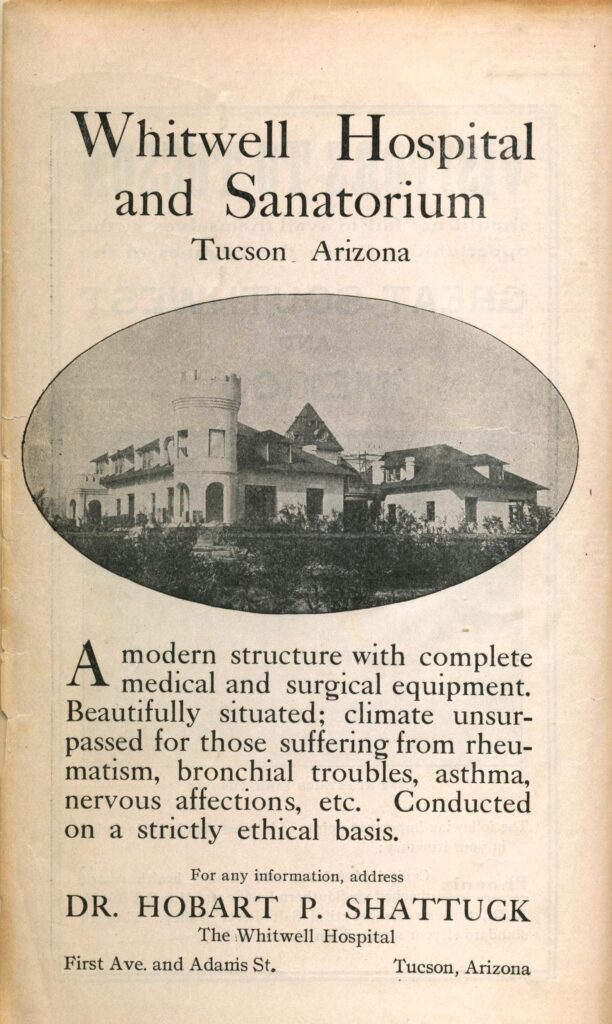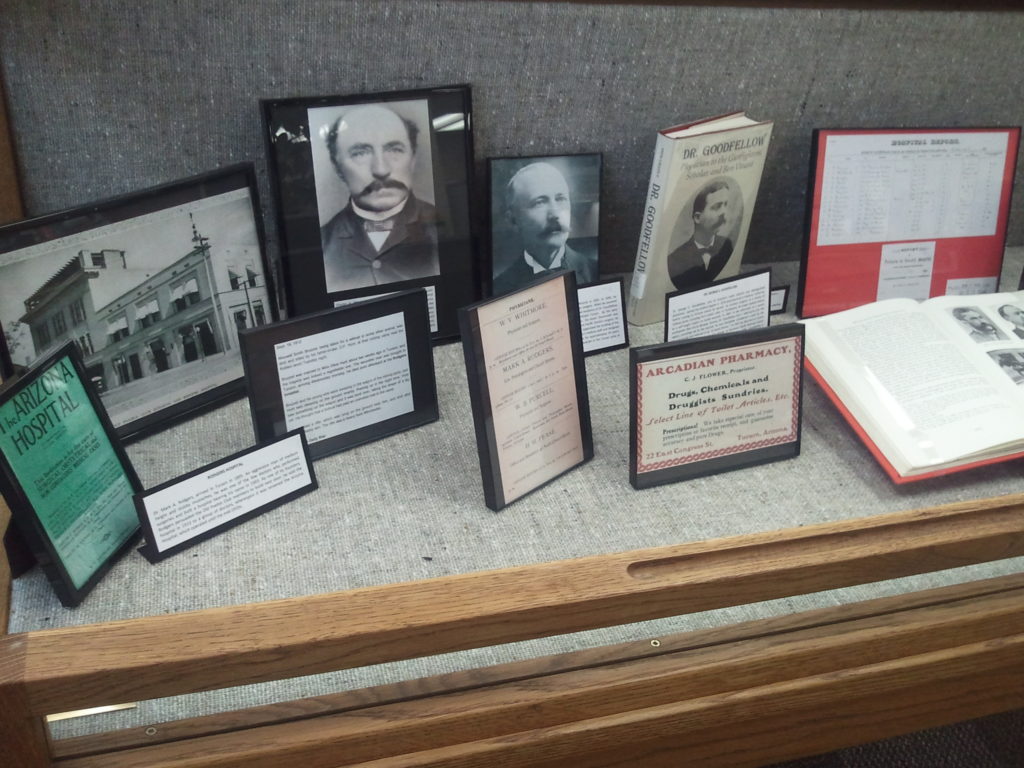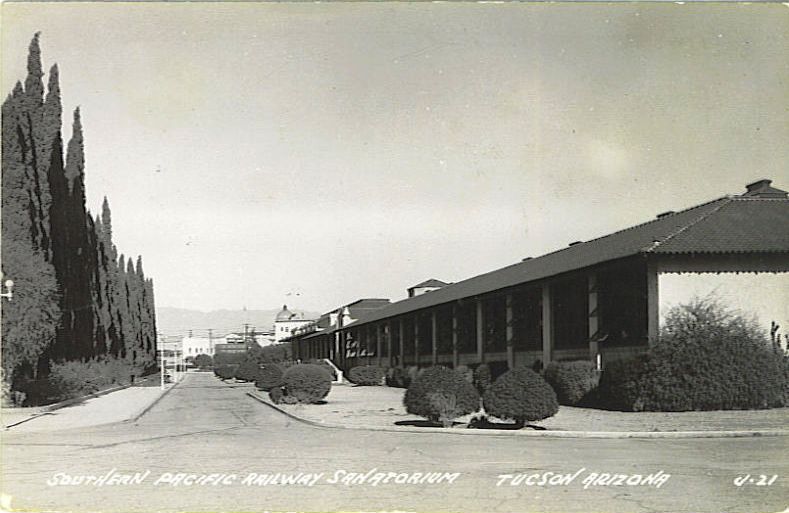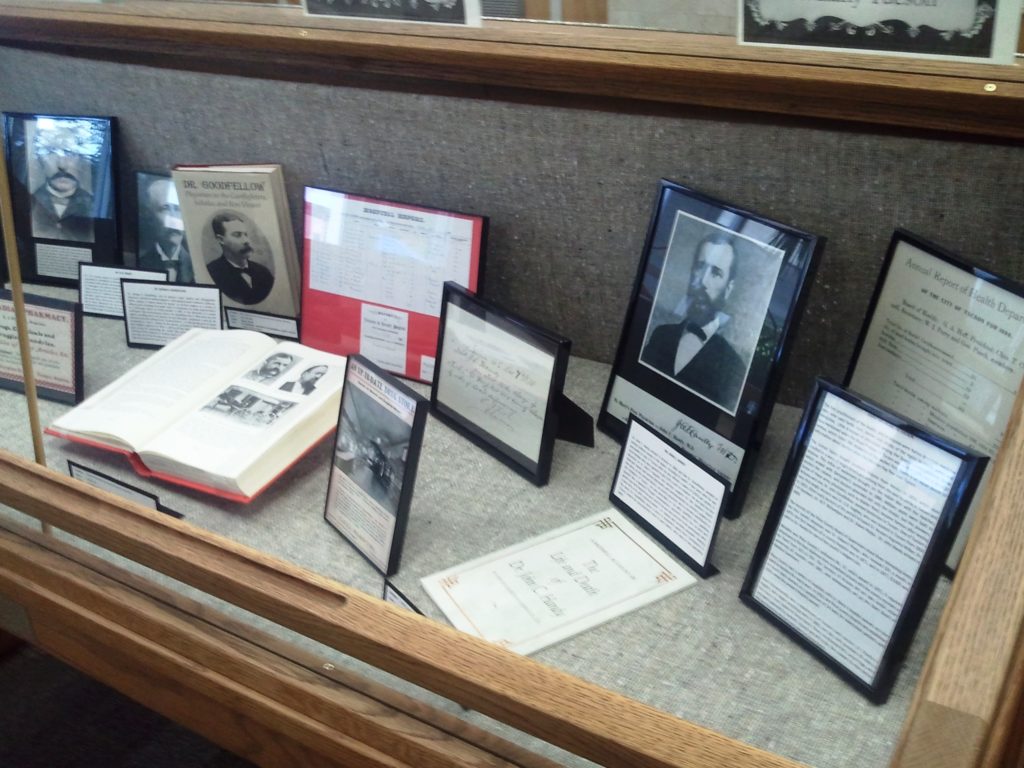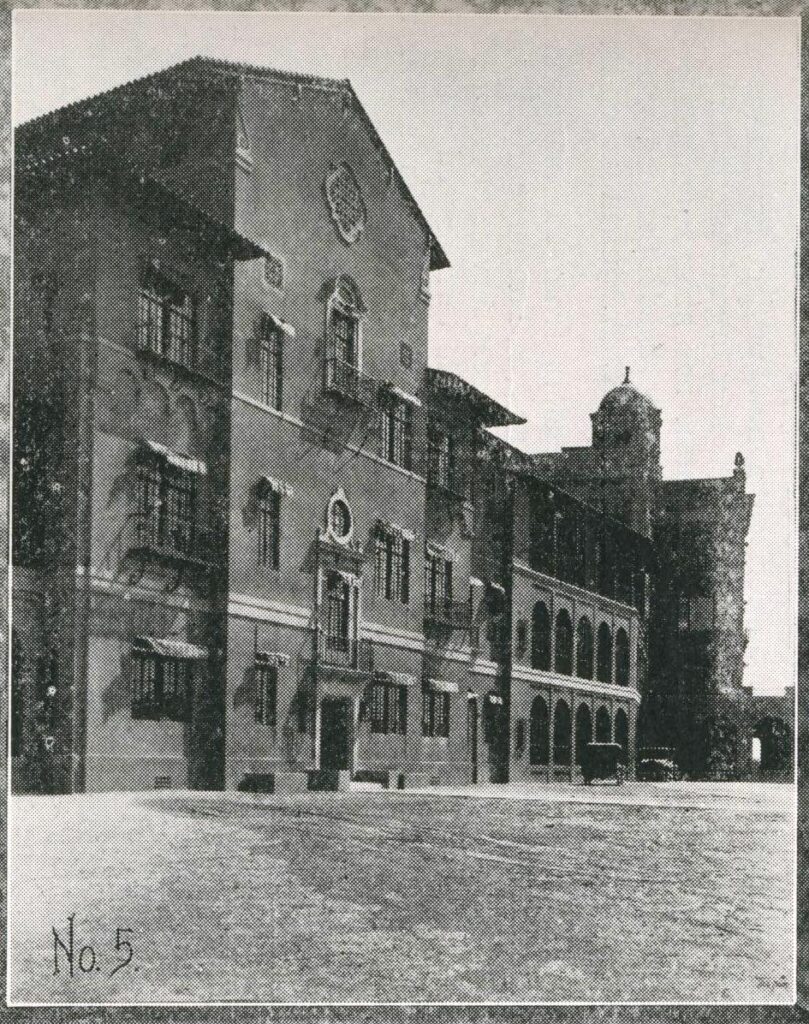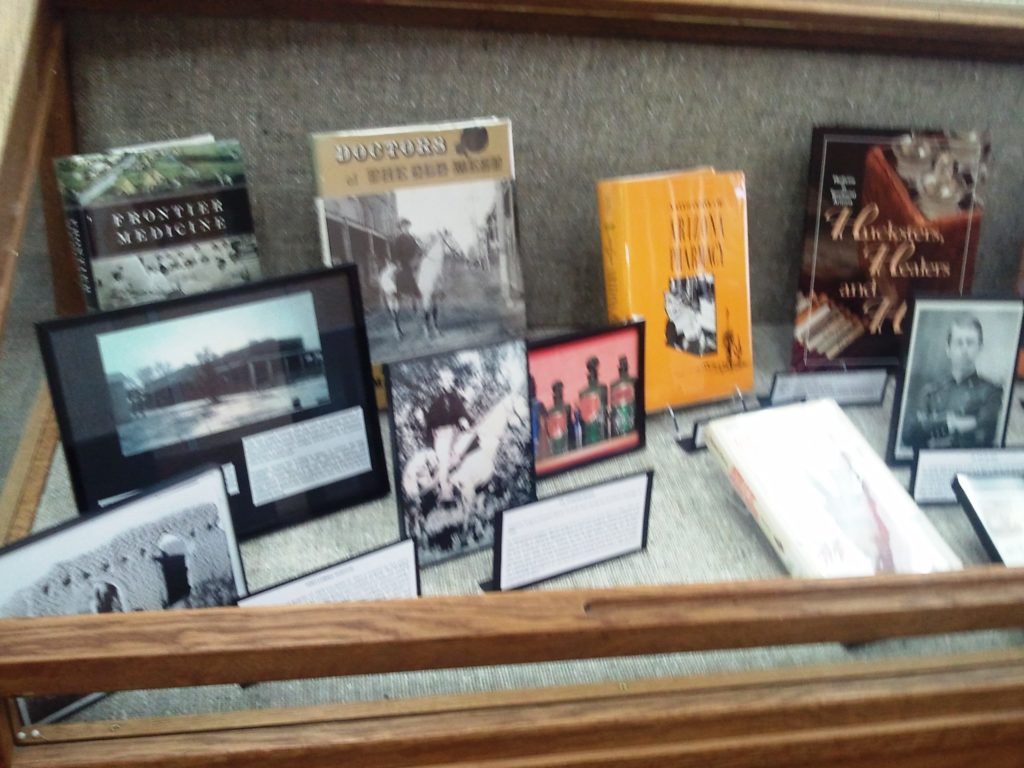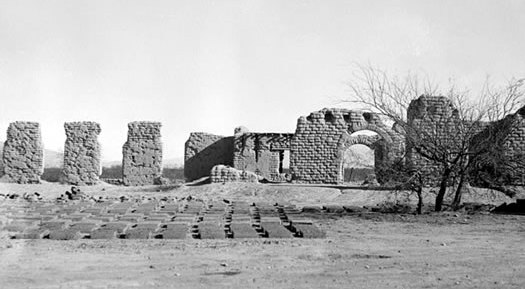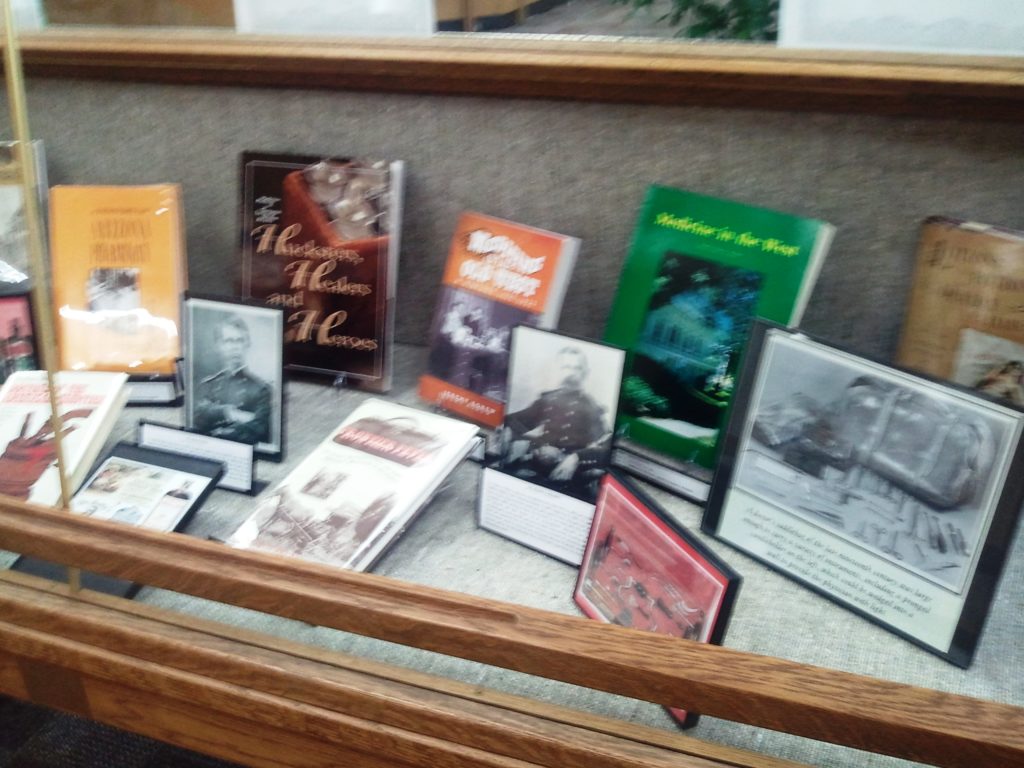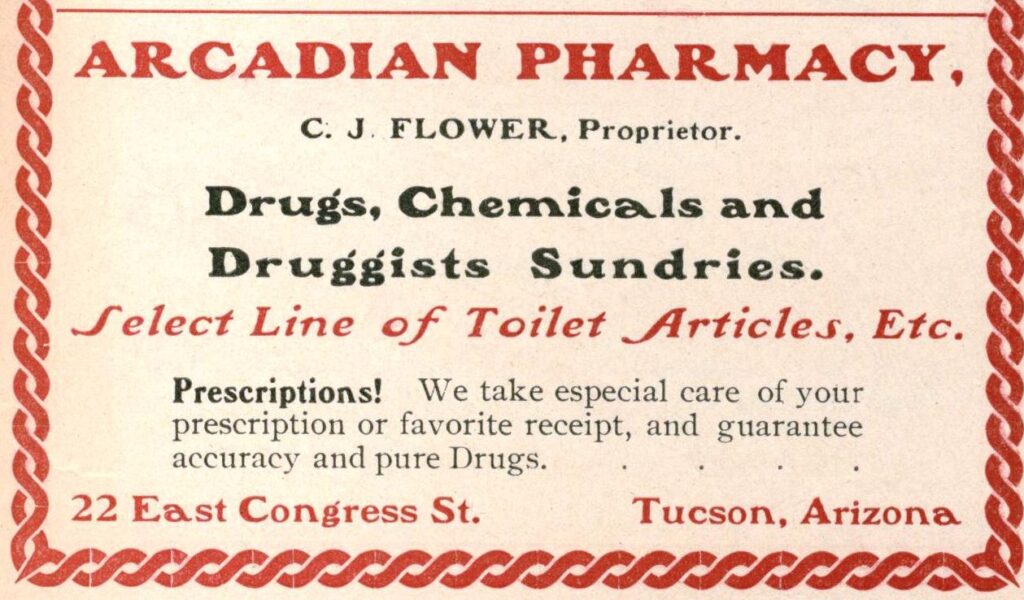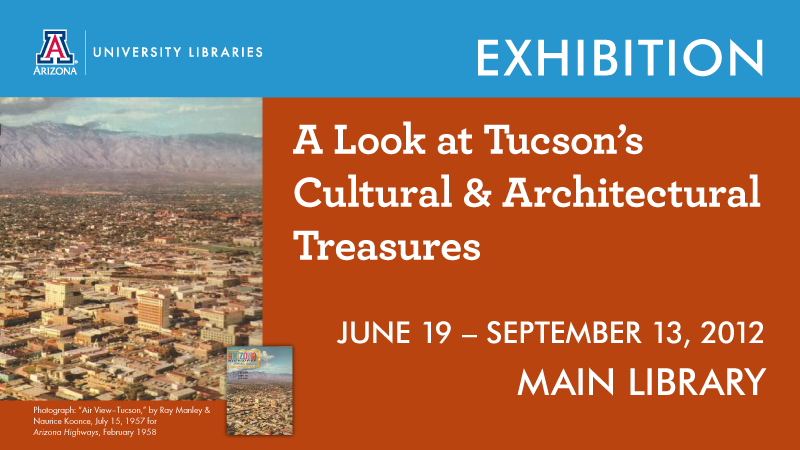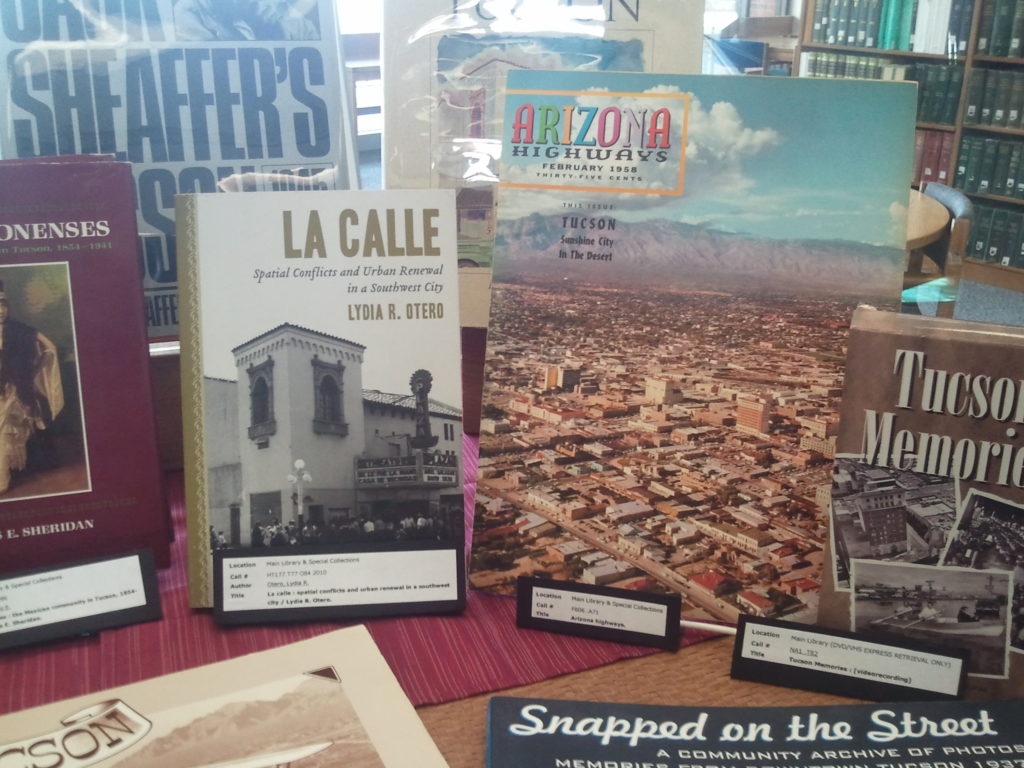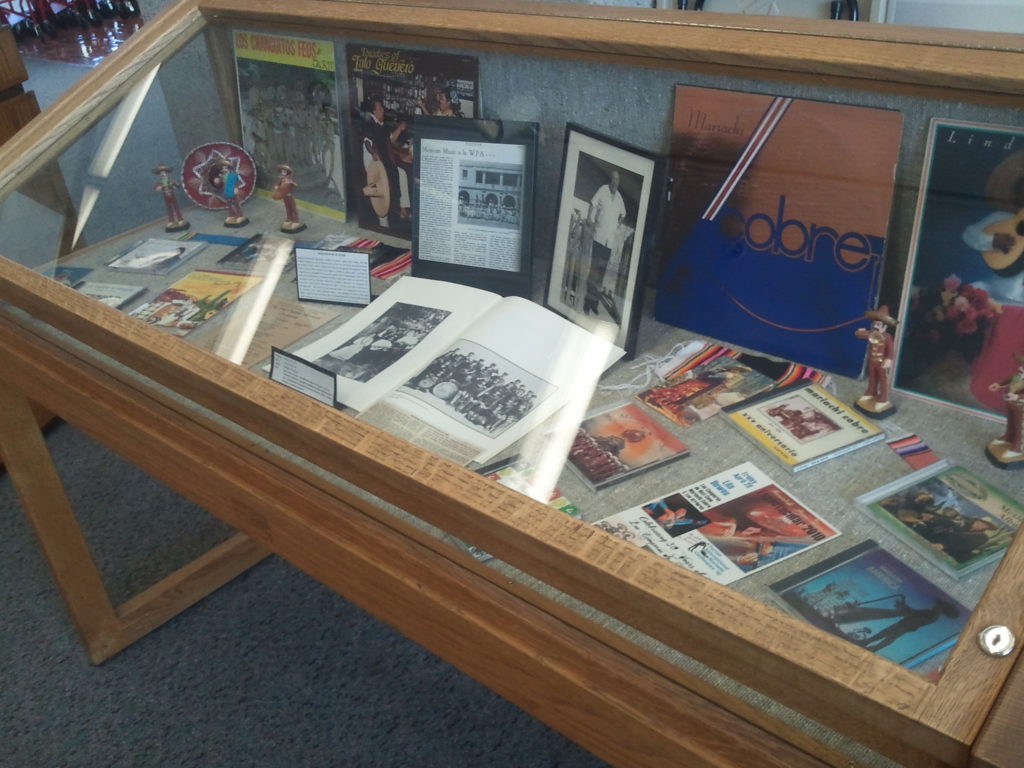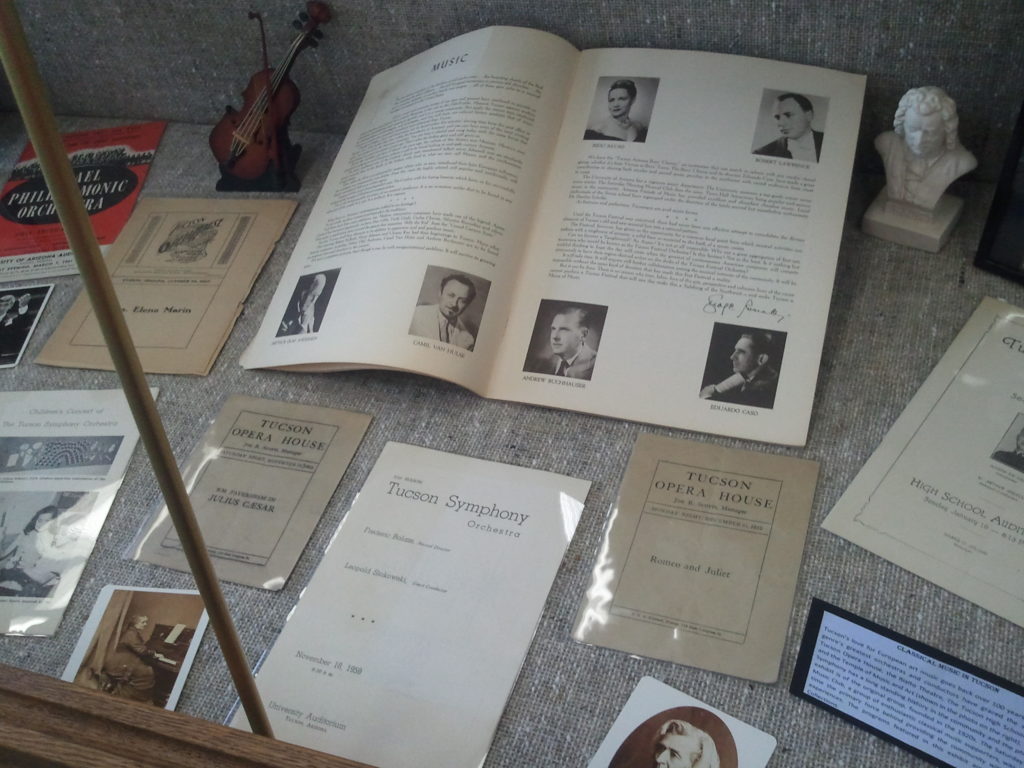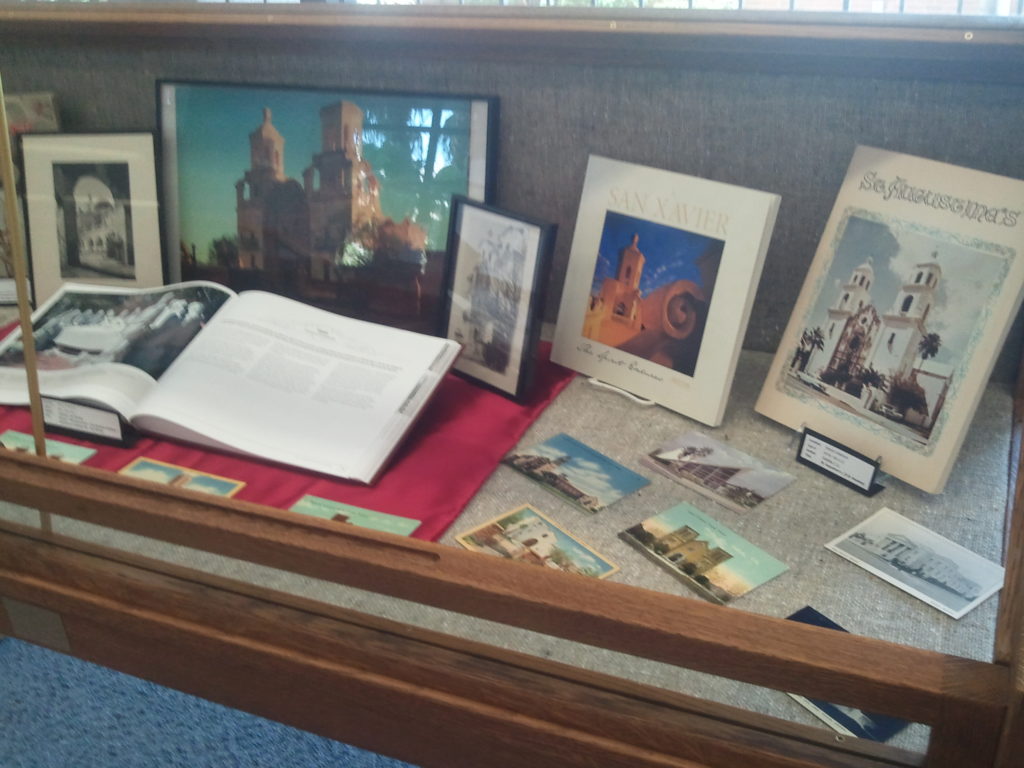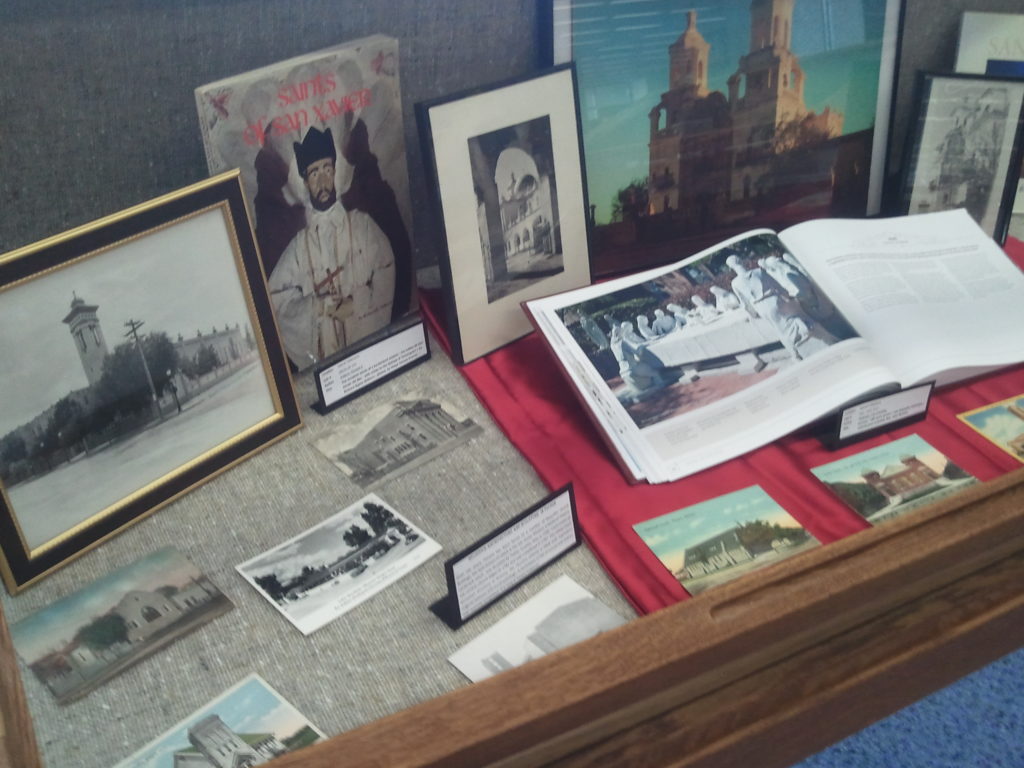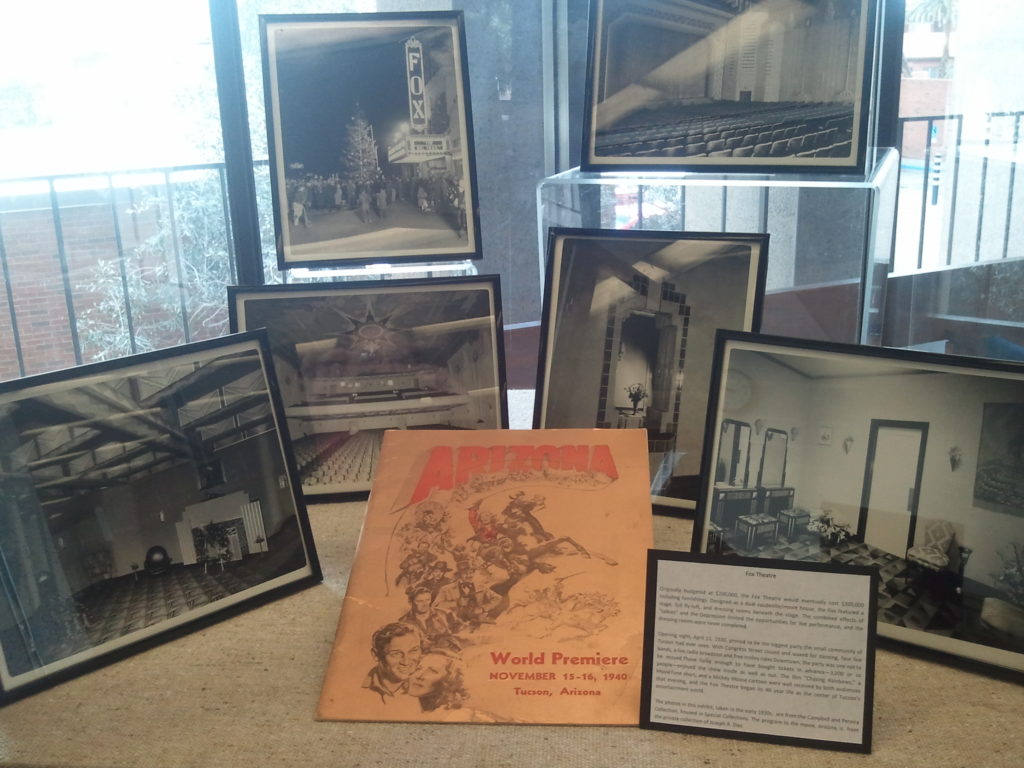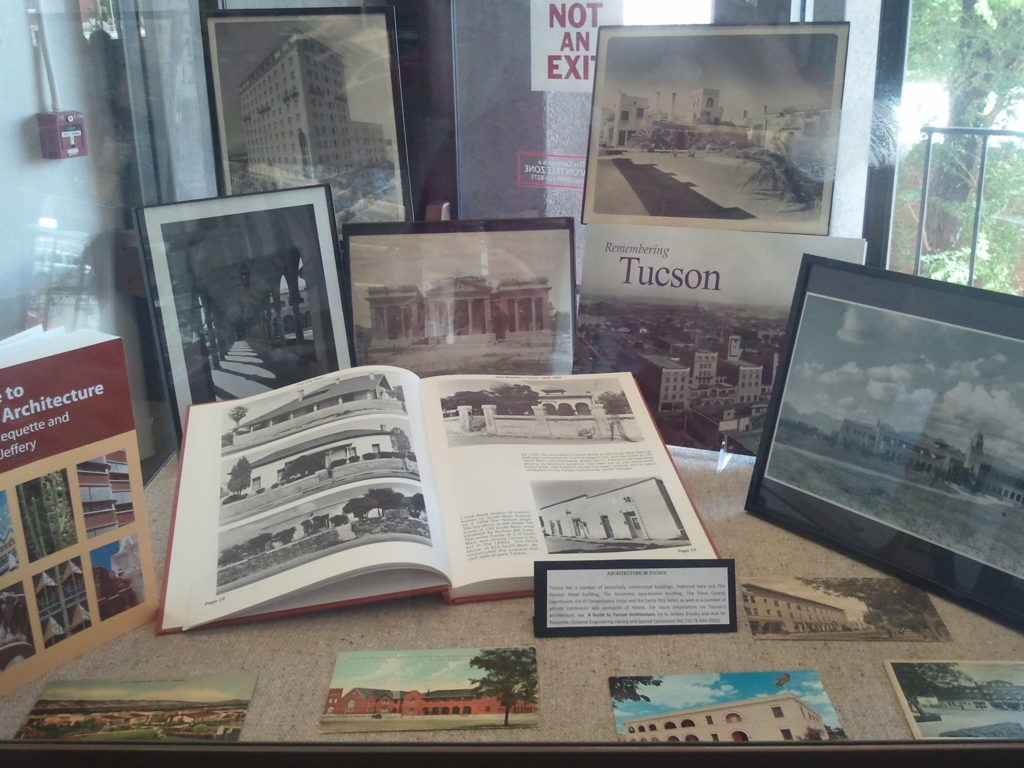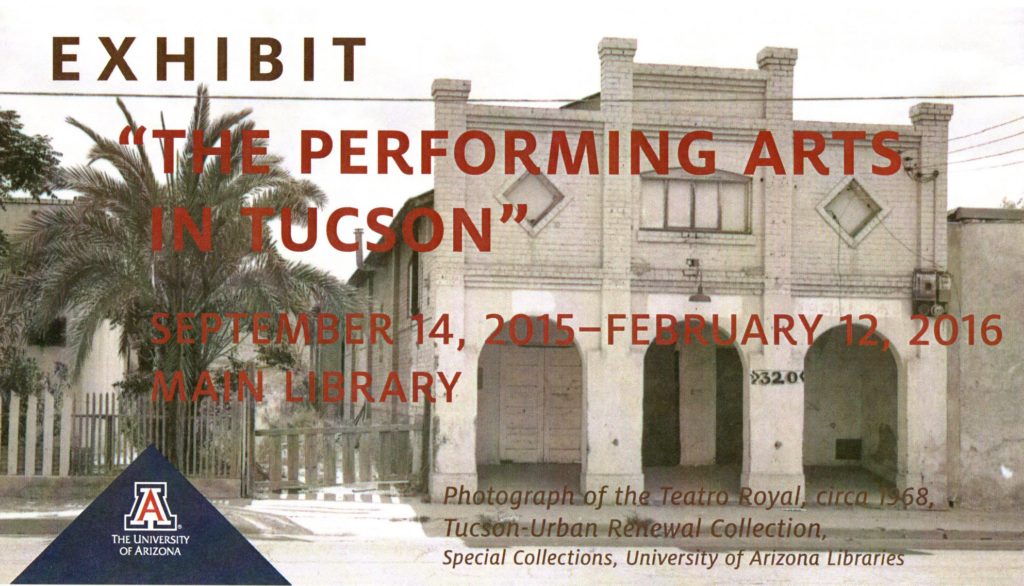
I put this exhibition together for display in the Main Library. All of the material comes from Special Collections, which has an amazing collection of performing arts-related holdings. The exhibition, although small, was well received, and was a pleasure to work on. I don’t have photographs of every section, but I did save some.
Description:
“Special Collections has a growing number of collections about the performing arts. This exhibit will draw on these collections to provide a look at Tucson’s history of performing arts from the 19th century to the present day. Included will be recordings, photographs, programs and other ephemera.
Tucson has been home to a rich arts scene encompassing music, dance, theater and cinema. The Tucson scene has thrived in part because of its inclusive nature, which has included classical as well as popular offerings. For instance, music offerings span symphonic and opera offerings at one end of the spectrum to street music and folk festivals at the other.
Tucsonans are fortunate that our community has so many arts and cultural organizations that sponsor performances, not the least of which is the University of Arizona. The exhibit will include materials from UA Presents, the “Saturday Morning Music Club” and Tucson Meet Yourself among other collections.”
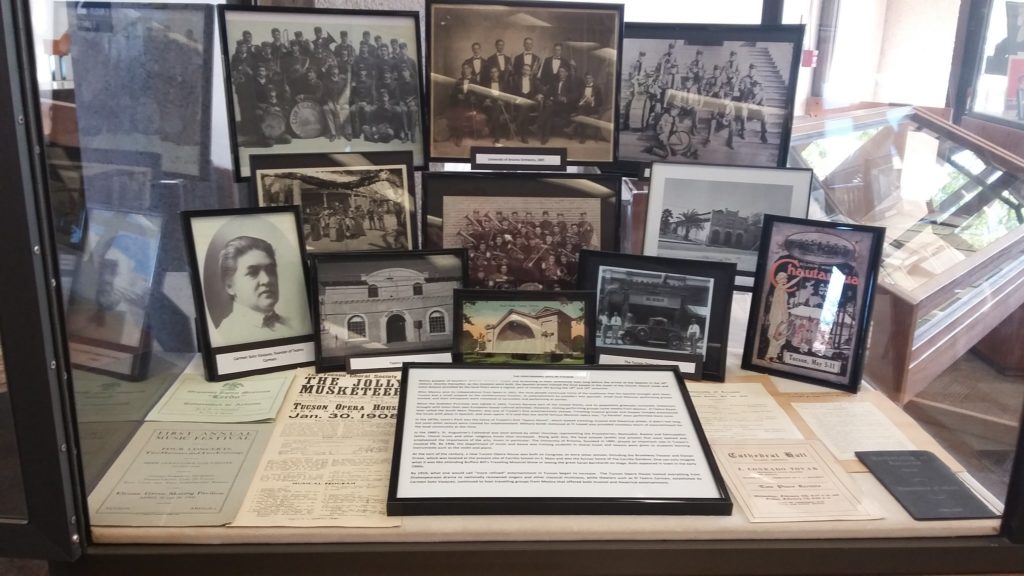
THE PERFORMING ARTS IN TUCSON
Native peoples of Southern Arizona included chants and drumming in their ceremonial lives long before the arrival of the Spanish in the 16th century. Shortly thereafter, as the missions were built, the Spanish priests trained the local people in the music of the Church. Choral music and voice lessons provided by the local friars were a regular part of mission life during the 18th and 19th centuries.
After Mexico won its independence from Spain in 1821, the local people continued many of the traditions that the Spanish brought with them. Tucson was a small outpost on the northernmost frontier, so entertainment by outsiders was sporadic. Small local Mexican performing groups existed, and their infrequent work consisted of serenades and performing at parties.
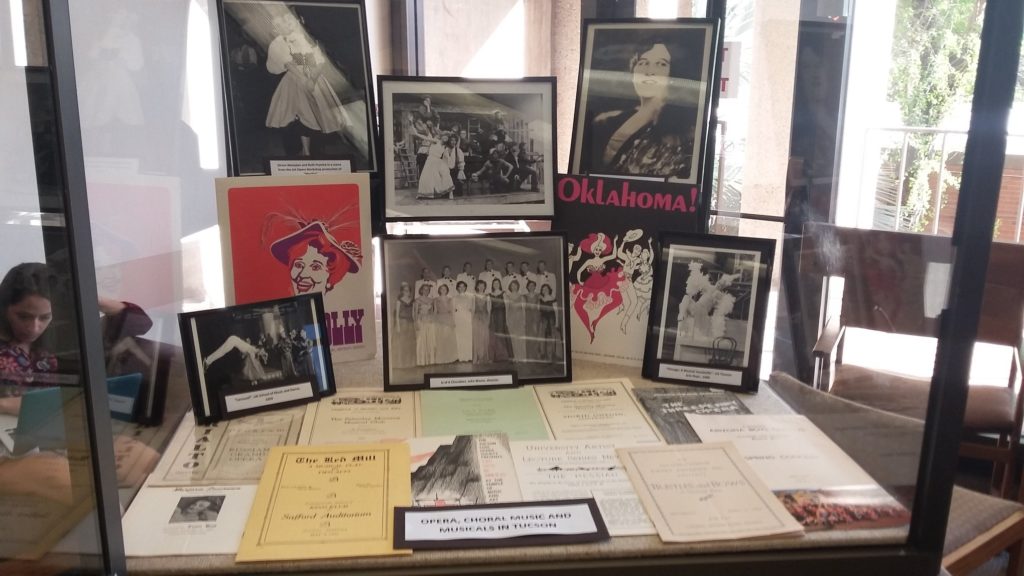
When the Gadsden Purchase was signed in 1854, Tucson became part of the United States, and its population gradually increased. Easterners brought with them their own European-based cultural activities. However, visiting performing groups came mostly from Mexico. El Teatro Royal, later called the South Main Theater, was one of Tucson’s first entertainment venues. Traveling musical groups and theater troupes entertained the locals with plays in Spanish, and even opera. It is said that the world famous Mexican opera star, “La Peralta” even performed there once.
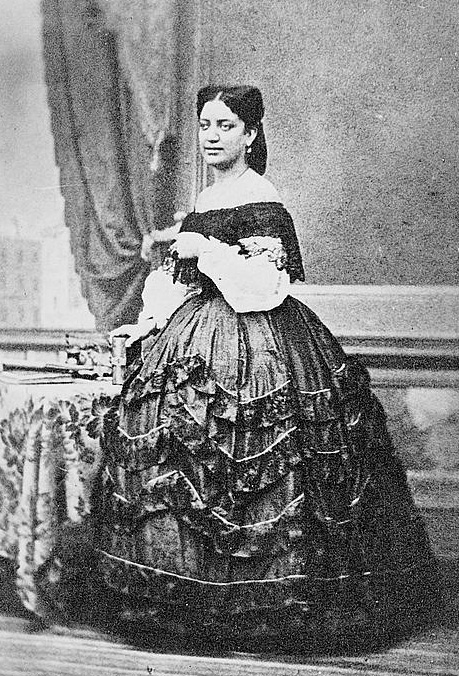
The following story comes from the book, “Tucson Incunabula”, by Alexandra Maria Diamos.

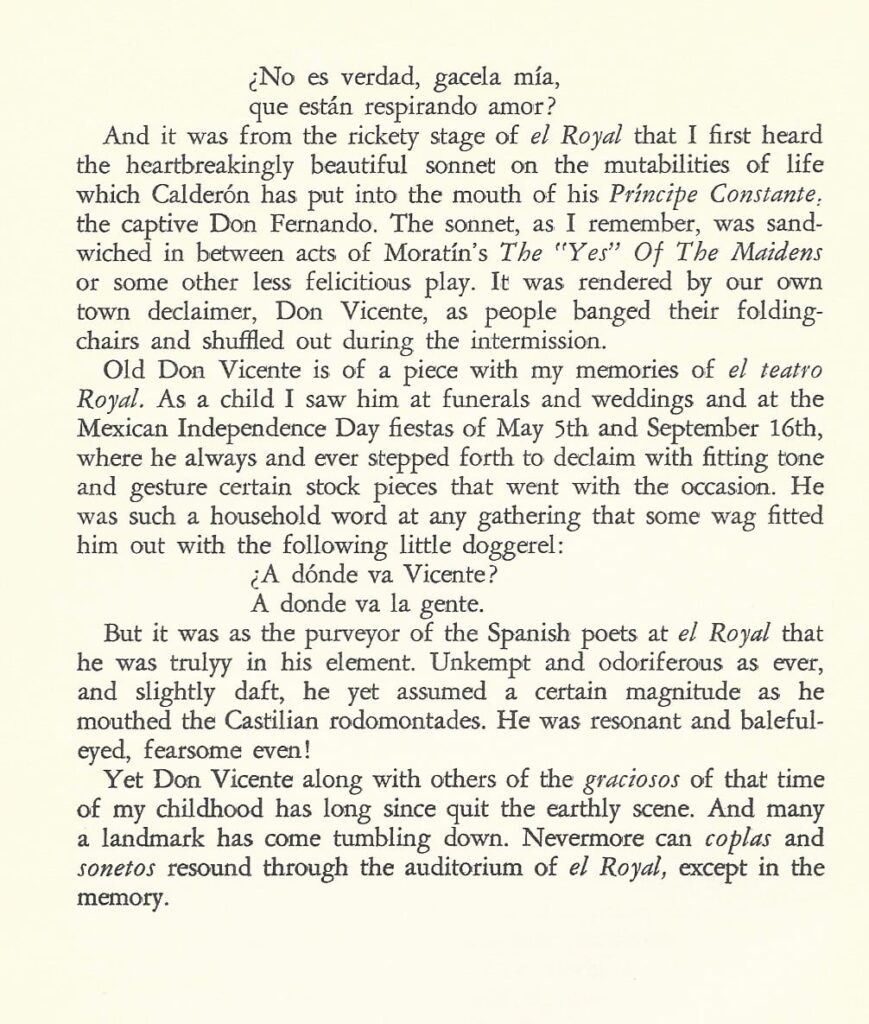
In the 1870s, Levin’s Park was the home of Tucson’s first “Opera House”, which hosted traveling musical and theatrical shows. It didn’t last long, but soon other venues were created for entertainment. Military bands stationed at Ft Lowell also provided countless hours of entertainment for the local community at this time.
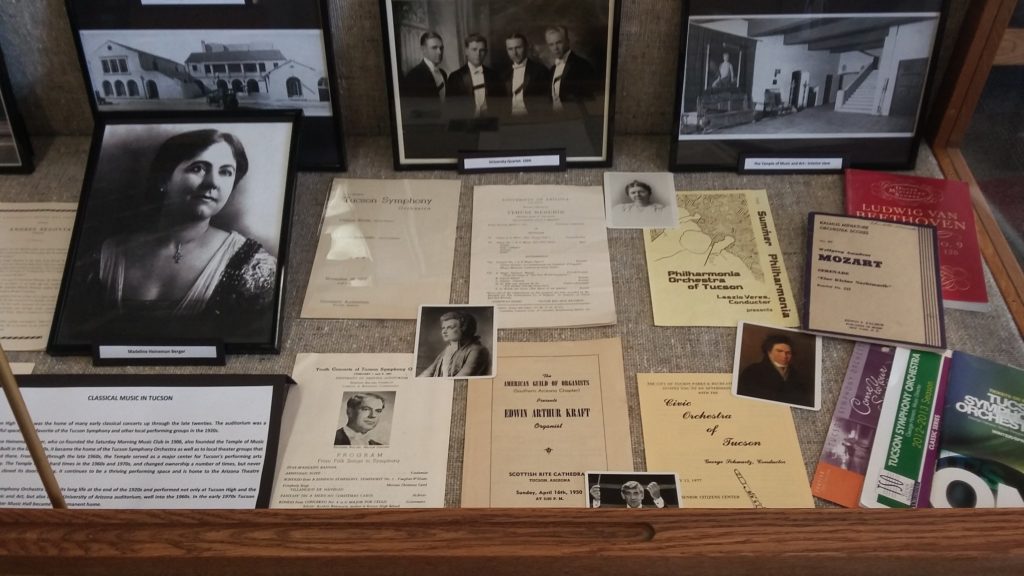
In the 1880’s, St. Augustine’s Cathedral was soon joined by other churches representing the Presbyterian, Methodist, Baptist and Episcopalian faiths. Choral music and other religious music thus increased. Along with this, the local schools (public and private) that were opened also emphasized the importance of the arts, music in particular. The University of Arizona, founded in 1885, played an important role in Tucson’s musical life. By 1906, the department of music and dance was training students in choral music and lessons were given to students learning instruments such as the violin and piano.

At the turn of the century, a new Tucson Opera House was built on Congress, as were other venues, including the Broadway Theater and Elysian Grove, which was located at the present site of Carrillo School on S. Main and was the former home of The Carrillo Gardens. One can only imagine what it was like attending Buffalo Bill’s Traveling Minstrel Show or seeing the great Sarah Bernhardt on stage. Both appeared in town in the early 1900s.
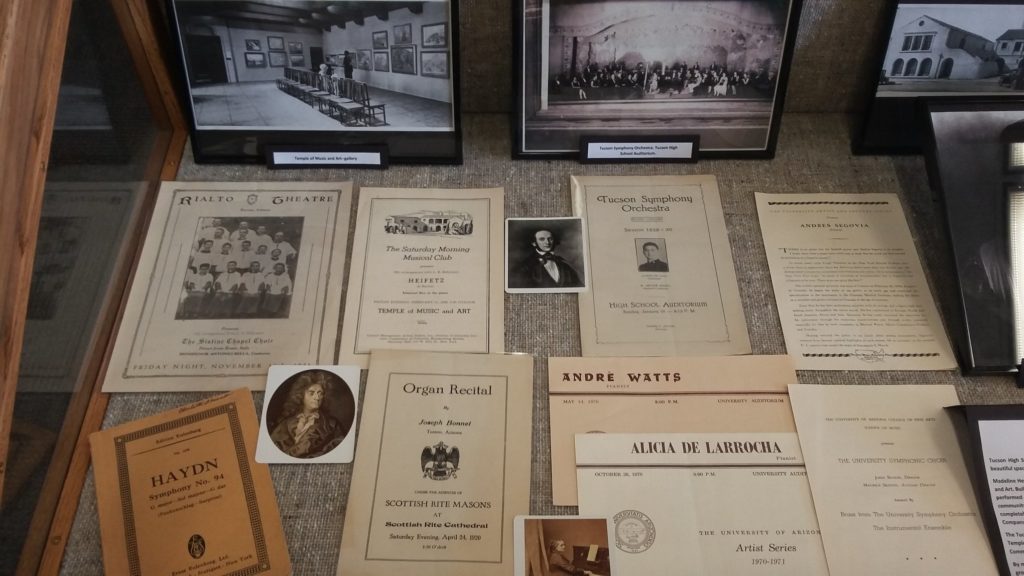
By 1910, what one would call “more refined” entertainment in Tucson began to increase. The Tucson Opera House hosted everything from Shakespearean drama to nationally renowned singers and other classical musicians, while theaters such as El Teatro Carmen, established by Carmen Soto Vasquez, continued to host travelling groups from Mexico that offered both musical and theatrical entertainment.
CLASSICAL MUSIC IN TUCSON
Tucson High School was the home of many early classical concerts up through the late twenties. The auditorium was a beautiful space, and a favorite of the Tucson Symphony and other local performing groups in the 1920s.
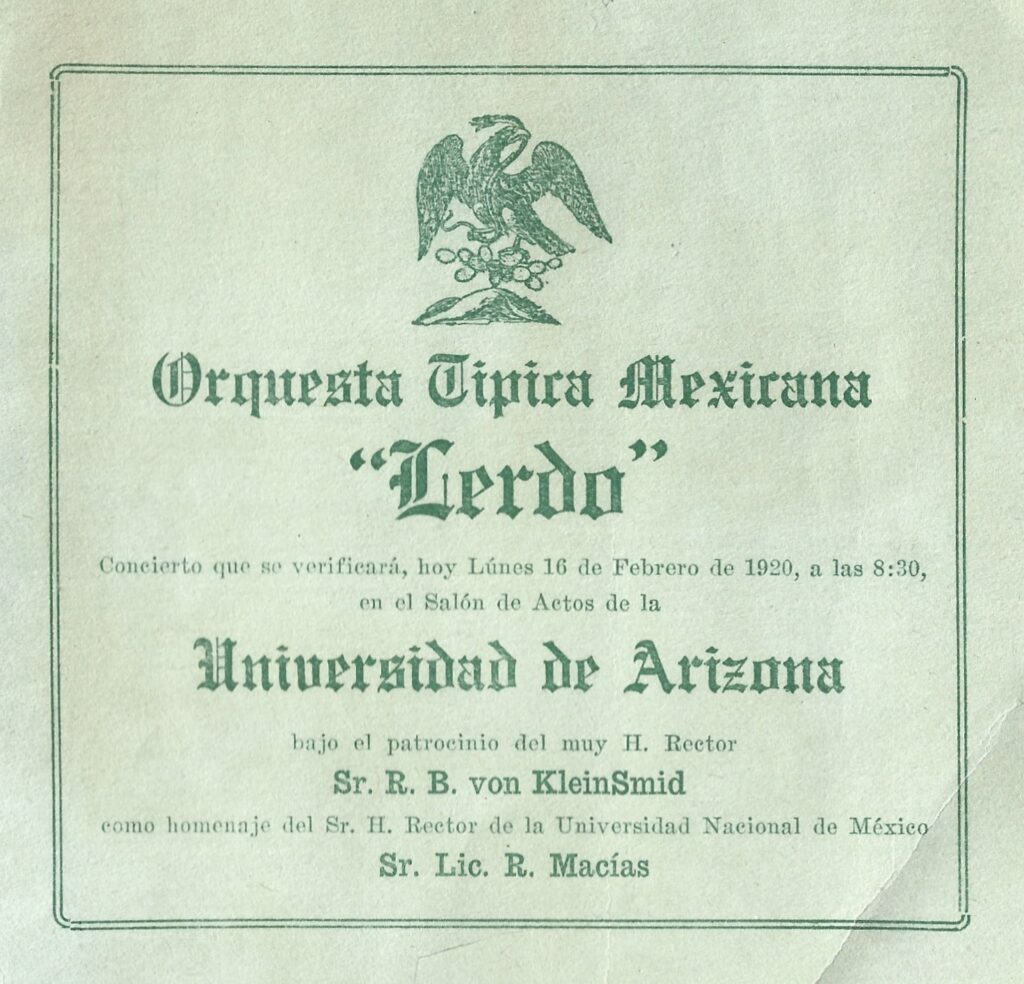


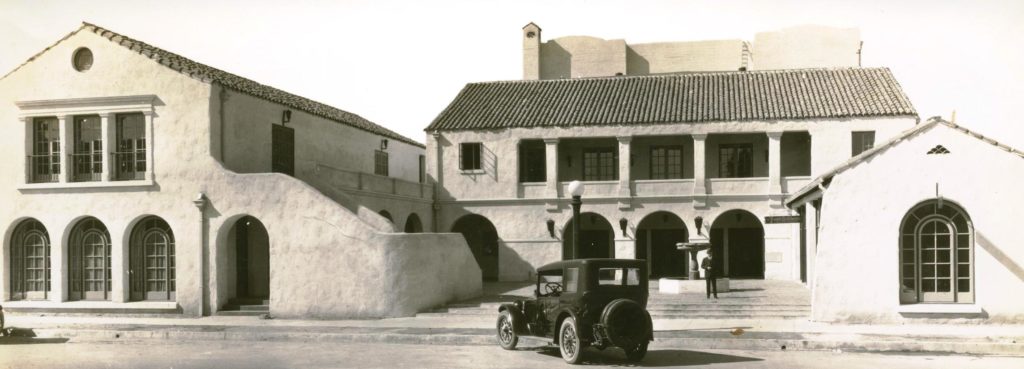
Madeline Heineman Berger, who co-founded the Saturday Morning Music Club in 1906, also founded the Temple of Music and Art. Built in the late 1920s, it became the home of the Tucson Symphony Orchestra as well as to local theater groups that performed there. From 1929 through the late 1960s, the Temple served as a major center for Tucson’s performing arts community. The Temple fell on hard times in the 1960s and 1970s, and changed ownership a number of times, but never completely closed its doors. Today, it continues to be a thriving performing space and is home to the Arizona Theatre Company.

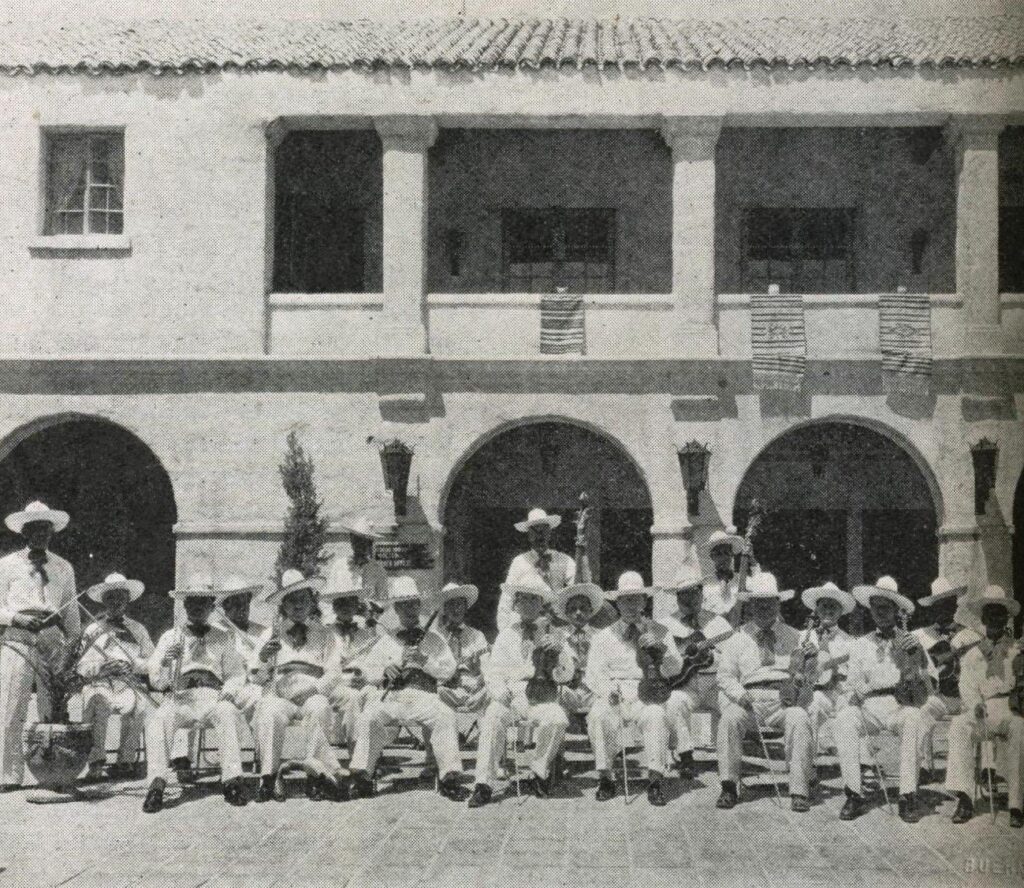
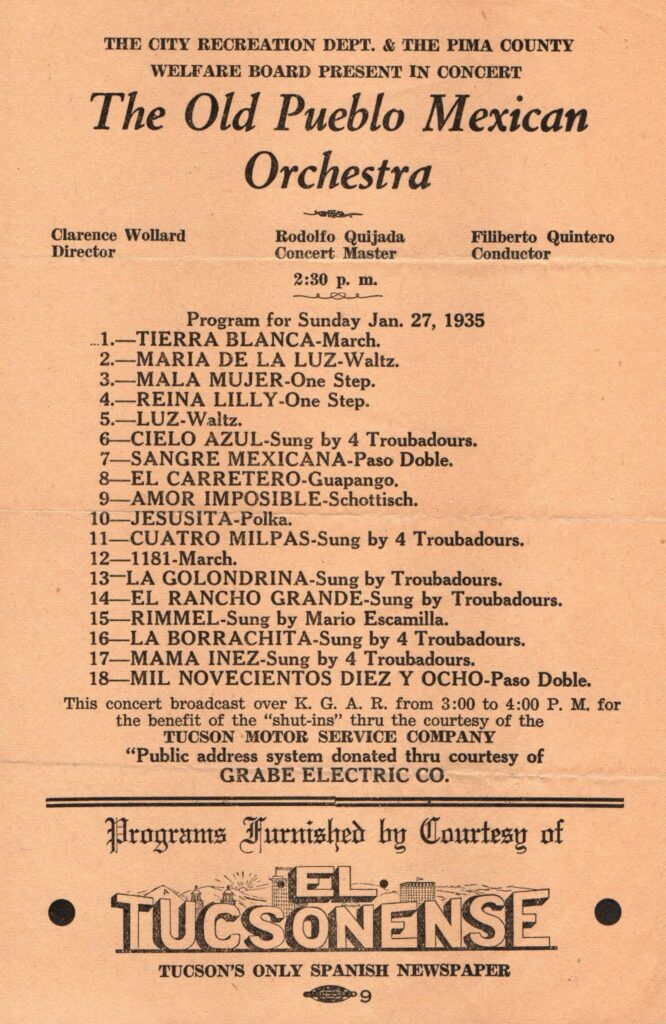
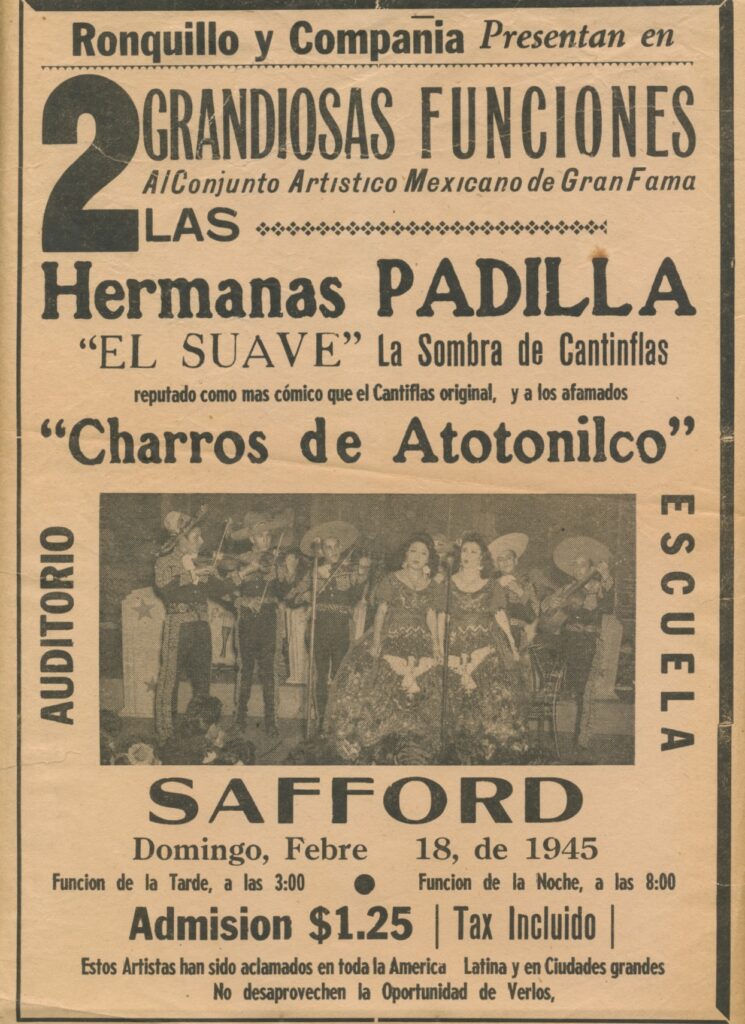
The Tucson Symphony Orchestra began its long life at the end of the 1920s and performed not only at Tucson High and the Temple of Music and Art, but also at the University of Arizona auditorium, well into the 1960s. In the early 1970s Tucson Community Center Music Hall became its permanent home.
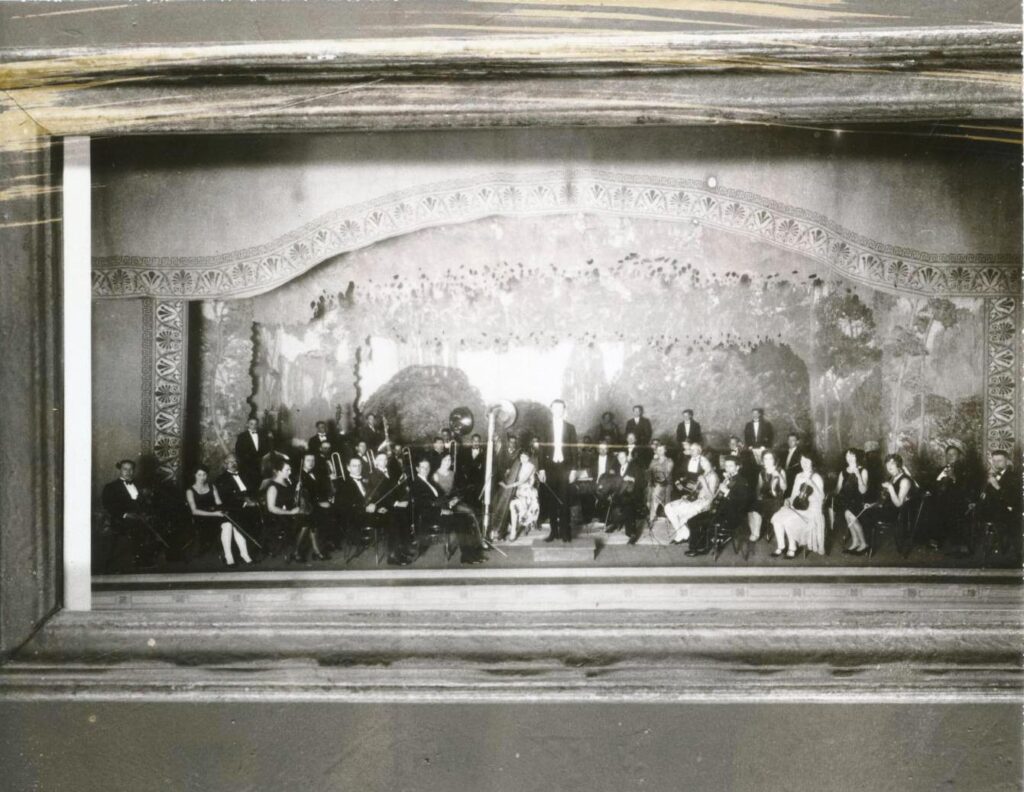
By mid-century, the University had a well-established annual visiting artist series, and hosted many talented musicians and groups, including dance troupes such as the Ballet Russe de Monte Carlo. The students and faculty of the School of Music also provided concerts for the public on a regular basis. Theater was taught both in the public schools as well as at the University level, and performances of plays, musicals and opera were held on a regular basis by both local and visiting performers.

